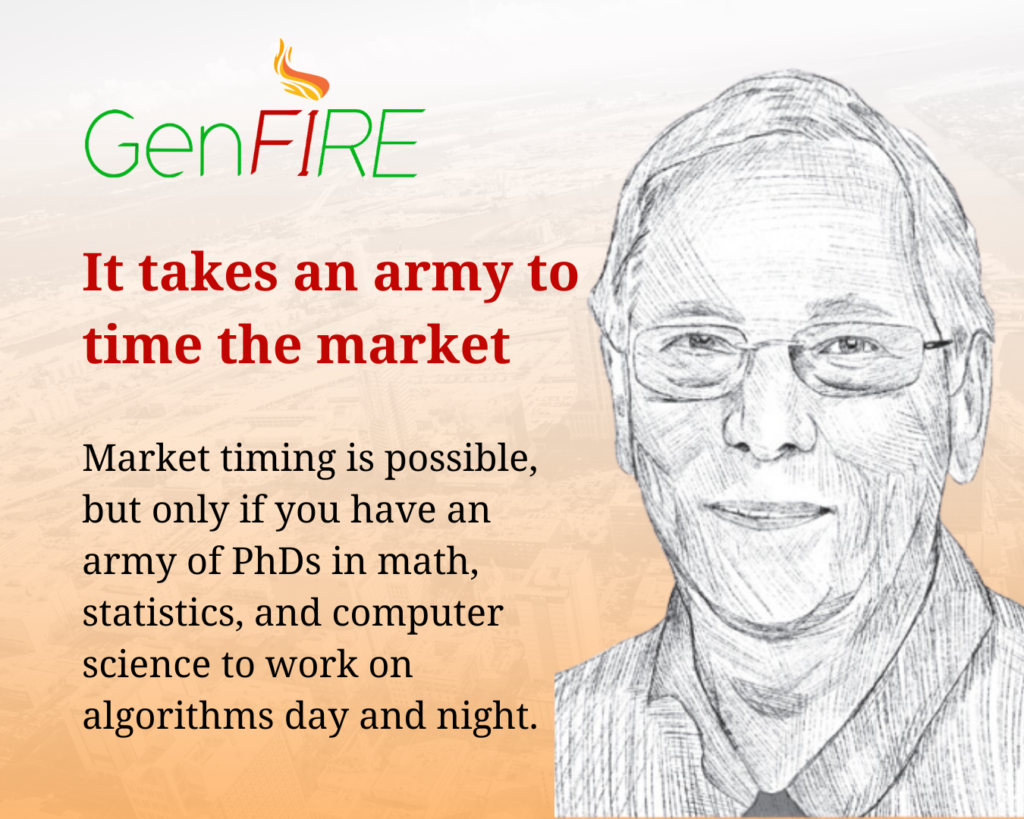Blair Hull: It Takes an Army to Time the Market
May 16, 2023

Recently, we posted a piece discussing just how hard it is to time the markets. However, let’s say you’re committed to mastering market timing. You’ve read all the forewarnings, done your research, but think you have what it takes to achieve this difficult feat. Exactly what does it take to time the market and how do you go about doing it?
To answer that question, we look to the advice of a true market timing wizard: Blaire Hull, who we profiled as part of the research for our upcoming book Ten Commandments of Investing. Hull is the founder of Hull Trading Company. He served as Chairman and CEO of the firm, before selling it to Goldman Sachs for $531 million. Hull is recognized by Forbes as one of “the 40 Greatest Traders of All Time.” His paper, “Practitioner’s Defense of Return and Predictability,” laid out the possibilities of timing the markets, and he employs the strategy at his own trading firm. This is what Hull says about market timing:
Defining market timing: “There is some optimal position of equities and cash that you should have every single day, and that comes out from a variety of information.” Simply put, you hope to dodge the bad days and be in the market during the good days. This means a lot of market repositioning. To consistently have the right position, you first have to have the right information though.
Stigma against market timing: “Everybody says that… timing the market is dangerous. Well, that may have been true till the year 2000, but with this explosion of data we have had, with new government data, the internet, and even Twitter and social media, we now have a situation where, with new predictive analytics, it is possible to time the market.” In other words, technology is changing the game. New algorithms and the ability to mine vast amounts of data have made the ability to time the markets more predictably accurate than previously possible. However, before you get too excited, it’s probably best to keep reading.
You need an edge: “If you were to go to a casino and you didn’t count the cards… you are going to lose and that is your disadvantage. If you have a disadvantage in all the games you are going to play, my recommendation is that …there’s no reason to play… People enjoy the fluctuation. It’s a fun game to do. But not if you’re doing it as an investor.” If you’re doing it as an investor expect to get hurt. So, what kind of an advantage are we talking about? This is where those advanced algorithms and data mining capabilities come into play. If you don’t have those tools (aka the advantage), you might as well be betting at a casino, and that’s NOT good investing – it’s gambling.
It takes lots of resources: “We have a proprietary ETF which we hold as an advantage. We have a proprietary trading system that has servers…we have computers that trade; we don’t have people that trade. And we have 25 different servers at the Chicago Exchange, and we’re constantly trying to figure out if this server and strategy lost its edge…we’re always worried that our strategies are losing their advantage.” If that sounds like a lot of resources – its because they are. What kind of resources do you have? Without the people and the tools, you might as well be playing at a slot machine.
So, market timing is possible, but only if you have an army of PhDs in math, statistics, and computer science to work on algorithms day and night. You will also need lots of data, computer systems, proximity to exchanges, and advanced theories to do market timing effectively. In other words, you need an edge. Without one, it’s best to stick with a more passive approach.
